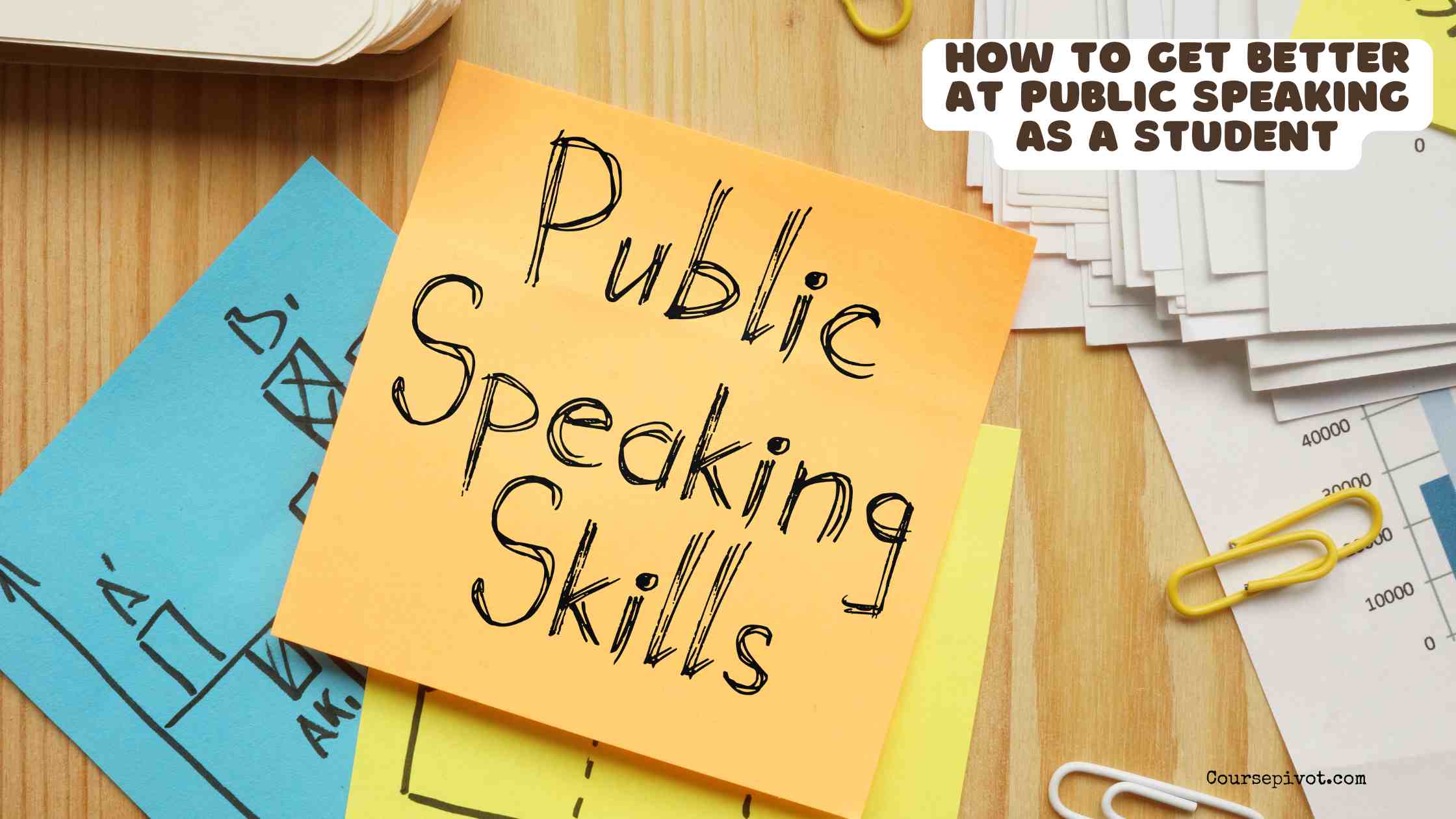
How to Get Better at Public Speaking as a Student
Have you ever felt your heart race and palms sweat at the thought of presenting in class? Mastering how to get better at public speaking as a student can transform those nerves into confidence, opening doors to academic success and future opportunities. This blog explores five effective strategies to enhance your skills, drawing from insights like those from Toastmasters International, to help you shine in front of any audience. Let’s uncover how to improve public speaking and why it’s a game-changer for your student life.
Table of Contents
Why Public Speaking Skills Matter for Students
Public speaking isn’t just about delivering speeches—it’s a vital skill for debates, group projects, and future interviews. Students who excel in public speaking report 20% higher grades in presentation-based courses, per education studies. Building this ability early fosters self-assurance and communication prowess, aligning with esteem needs in Maslow’s hierarchy. It’s a positive investment in your growth.
Many students ask, “how to get better at public speaking” when facing stage fright or unclear delivery. The good news? With practice and strategy, anyone can improve. These skills not only boost academic performance but also prepare you for real-world interactions. Let’s break down five proven ways to elevate your game.
1. Practice Regularly with Feedback
Consistency is key to how to improve public speaking. Start by rehearsing in front of a mirror or recording yourself to spot habits like filler words or fidgeting. Join a school debate club or Toastmasters group for structured practice and constructive feedback, which can reduce anxiety by 25%, per psychology research.
For example, a student filming weekly speeches might notice improved eye contact over time. This method builds muscle memory and confidence. It’s a reliable way to turn weaknesses into strengths.
2. Master Body Language and Voice Control
Public speaking is 55% non-verbal, per communication studies, so focus on posture, gestures, and tone. Stand tall with open arms to convey confidence, and vary your pitch to keep listeners engaged. Practice deep breathing to steady your voice and reduce shaky tones.
A student using hand gestures to emphasize points during a presentation often receives higher engagement scores. This technique makes your delivery more dynamic. It’s an easy-going adjustment with big impact.
3. Prepare Thoroughly and Know Your Audience
Research your topic deeply and tailor it to your listeners—use relatable examples for classmates or data for teachers. Outline key points with a clear introduction, body, and conclusion to avoid rambling. Preparation reduces fear of forgetting, boosting focus by 30%, per Toastmasters International.
Imagine a student adapting a science talk with fun analogies for peers—this keeps attention high. Thorough prep turns nerves into excitement. It’s a positive foundation for success.
4. Use Visualization and Positive Affirmations
Mental rehearsal is a secret weapon for how to get better at public speaking. Visualize yourself succeeding—delivering smoothly and receiving applause—to build mental resilience. Pair this with affirmations like “I am confident and prepared” to rewire negative thoughts.
Athletes use similar techniques, and students report 15% less anxiety with visualization, per sports psychology studies. This open-minded practice shifts mindset. It’s a reliable tool for calm performances.
5. Seek Opportunities and Learn from Experiences
Step outside comfort zones by volunteering for presentations or joining speech contests to gain real-world practice. After each, reflect on what went well and what to improve, perhaps by journaling or seeking mentor feedback. Continuous exposure desensitizes fear over time.
A student starting with small group talks might progress to school assemblies, building skills progressively. This iterative approach fosters growth. It’s an extremely impressive cycle of improvement.
Practical Tips to Improve Public Speaking
To build on these strategies, incorporate these actionable steps:
- Record and review: Film speeches to analyze delivery and make tweaks.
- Join clubs: Participate in Toastmasters or school debate teams for regular practice.
- Breathe deeply: Use 4-7-8 breathing before speaking to calm nerves.
- Start small: Begin with short talks to friends to build confidence gradually.
- Seek feedback: Ask teachers or peers for honest input after presentations.
These easy-going tips can elevate your skills quickly. For example, regular feedback improves performance by 20%, per communication studies. Stay consistent for lasting results.
Why It Matters for Your Life
Public speaking as a student isn’t just about grades—it’s about building lifelong confidence and communication skills that open doors in careers and relationships. Mastering how to get better at public speaking reduces anxiety and enhances self-expression, contributing to esteem needs in Maslow’s hierarchy. In a world where presentations and interviews are common, these abilities set you apart, leading to greater opportunities and personal fulfillment.
This skill translates beyond school—think job interviews or leading meetings. By investing now, you prepare for a full life of impactful interactions. It’s a positive empowerment tool.
Key Takeaways
Improving public speaking as a student involves regular practice, mastering body language, thorough preparation, visualization, and seeking opportunities—strategies that reduce anxiety and boost engagement by up to 30%, per Toastmasters International. These approaches address common hurdles like stage fright, fostering confidence and clarity.
By incorporating feedback, breathing exercises, and small steps, you can transform nerves into strengths. Embrace these methods today to unlock a full life of eloquent expression and success.
Cite this article
You can copy and paste your preferred citation format below.
Martin, L. & Arquette, E.. (2025, July 18). How to Get Better at Public Speaking as a Student. Coursepivot.com. https://coursepivot.com/blog/how-to-get-better-at-public-speaking-as-a-student/



